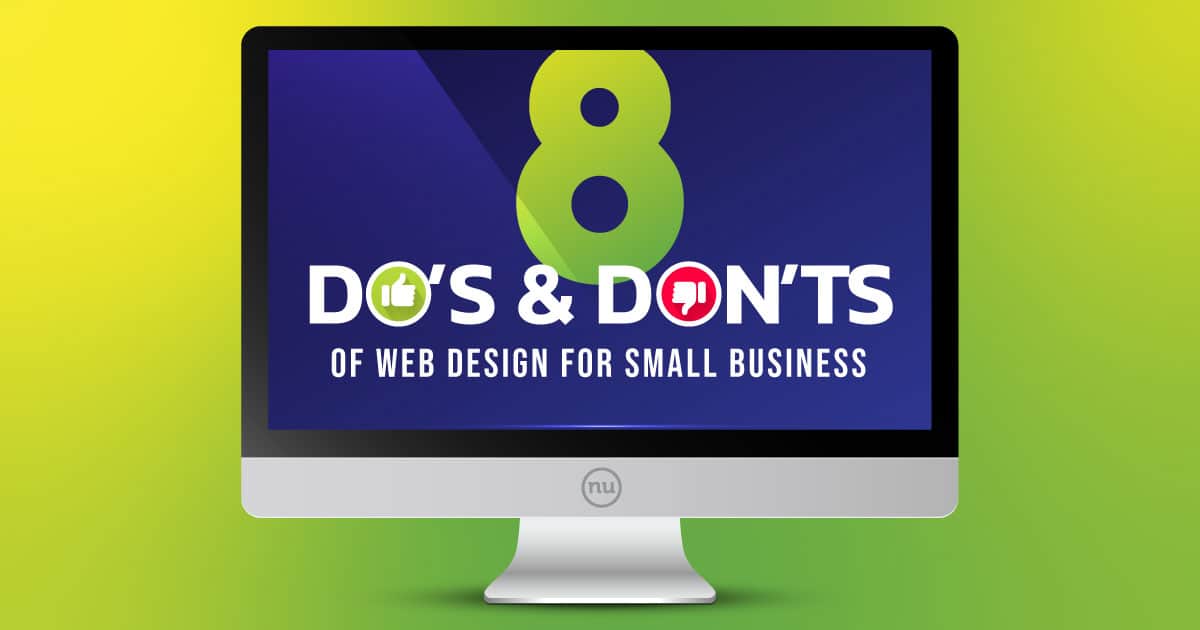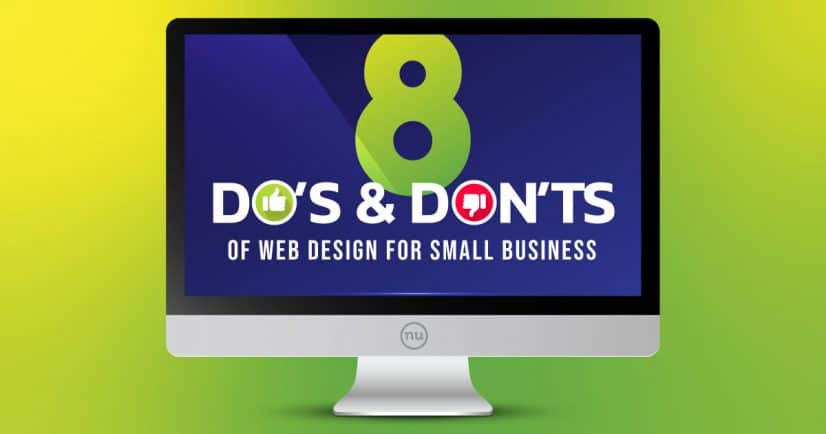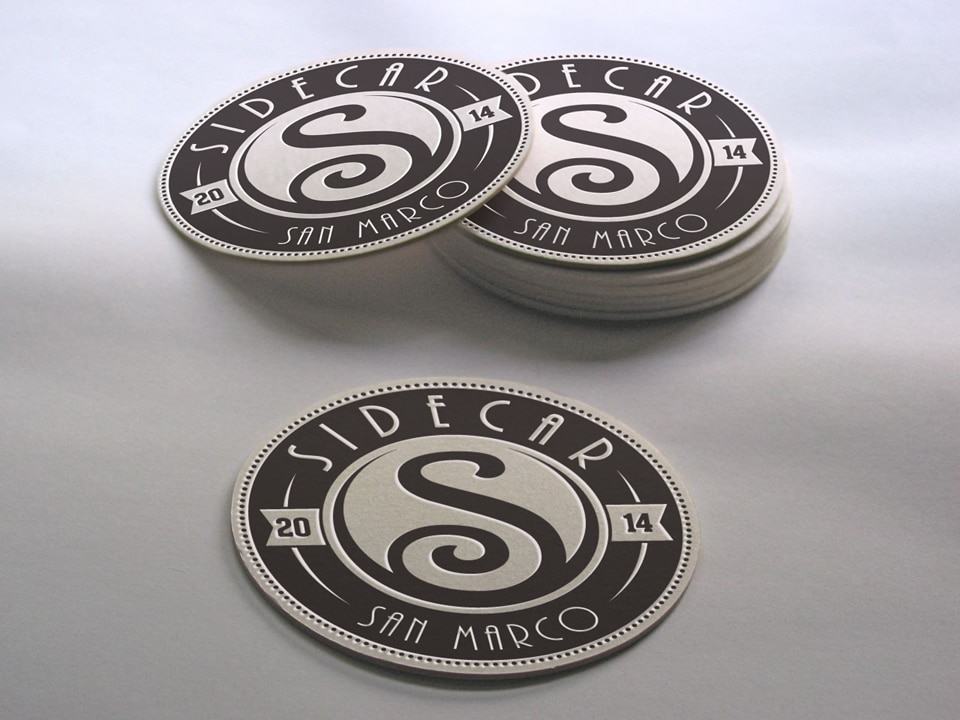
As creatives at a digital marketing agency, we know well the risk and reward scenario a new website typically represents for a small business. The investment in a new website needs to prove value by providing a favorable, effective user experience for one’s customers. Indeed, most small business websites have plenty of low-hanging fruit when it comes to improving and delivering a more valuable user experience. Since opening our doors in 2016, we’ve observed and developed a number of simple benchmarks within our own web design process that have not only improved our own efficiency in web development but enhanced the final product for our clients as well. From applying best practices to setting expectations about the design process itself, we’ve compiled eight of the most vital do’s & don’ts of web design for small business.
1) Do Maintain Your Brand’s Visual Identity
The place where any creative conversation should begin is that of your brand’s visual identity. We speak about the need for visual brand standards often but that is never more important than when building a website. The sheer volume of colors, fonts, imagery, and textures that typically go into a build requires strong creative direction. Providing or developing a set of visual brand standards first will allow your online presence to be consistent with your offline brand.
2) Don’t Overwhelm The User
 Most users’ primary annoyance on the web is that of intrusive and over-reaching page elements. Whether a user is plagued by pop-ups, chatbots, or the cringeworthy auto-play soundtrack, distracting page events violate your audience’s attention. Beyond providing a simpler user experience, make sure your new website design provides a clear narrative through consistent brand voice, legible copy, and clear navigation. Users don’t want to have to guess where to go and how to get there.
Most users’ primary annoyance on the web is that of intrusive and over-reaching page elements. Whether a user is plagued by pop-ups, chatbots, or the cringeworthy auto-play soundtrack, distracting page events violate your audience’s attention. Beyond providing a simpler user experience, make sure your new website design provides a clear narrative through consistent brand voice, legible copy, and clear navigation. Users don’t want to have to guess where to go and how to get there.
3) Do Ensure Your Content is Approachable & Digestible
As a follow-on to the advice above, the point of each page/section should be evident. Your sitemap should be complete enough to convey all of your points of value but not so granular that a user cannot find what they need. Put another way, don’t force your users to wade through the story of how your company formed just to contact your team. If you’re creating an eCommerce site then go ahead and lead with your moneymaker. Your brand’s value points should be clear without the need to hit your customers over the head with them.
4) Don’t Forget to Speak to Your Audience
As our readers are almost certainly tired of hearing us say, if it doesn’t work for your audience then it doesn’t work at all. All marketers are thrilled to get a signoff from their client, but if we’re not collectively focused on speaking to your audience, then our work will fall on deaf ears. Follow the data that leads you to success with the people who support your company and ensure that they don’t have to guess your good intentions through ineffective messaging.
5) Do Provide Conversion Opportunities
 This point is thankfully very simple but, oddly, still frequently overlooked. Once you’ve captured a new user, provide them with easy conversion points early and often–even on subpages. A good rule of thumb is that every single unique section of a page should have a link to either convert or learn more. It’s that simple. If you really want your conversion points to be effective, frame each button or link as a call to action so that a user can learn more, buy now, or get started today.
This point is thankfully very simple but, oddly, still frequently overlooked. Once you’ve captured a new user, provide them with easy conversion points early and often–even on subpages. A good rule of thumb is that every single unique section of a page should have a link to either convert or learn more. It’s that simple. If you really want your conversion points to be effective, frame each button or link as a call to action so that a user can learn more, buy now, or get started today.
6) Don’t Try to Reinvent the Wheel
Pressures exist all too often to break the standard rules of convention while developing a website. This could mean hiding your ecomm collection behind a login or refusing to use relevant keywords for your industry. This impulse can come from the client-side or within an agency and is typically the byproduct of an overly ambitious team member. While innovation remains an attractive virtue, we must regularly remind ourselves that it is not only perfectly fine to rely on the power of convention but that in most cases, projects benefit from it. Very few brands are suitable models for experimental or innovative website design, so don’t be afraid to lean on what works.
7) Do Design Beyond the Homepage
We touched on this in point #6 too, but one common misstep that we felt the need to write an entire article on the subject is ensuring that your website’s subpages (or inner pages) don’t fall flat. Your homepage cannot carry the weight of your entire website all on its own so it’s vital that every page is providing value and supporting your brand’s mission. Beyond each page pulling its weight, a website is not like a building with only one front door. A website with properly designed subpages provides multiple search-rich entry points into your site and you should make the most of each one.
8) Don’t Forget to Test Exhaustively
 Though it’s a shame that this is still something we have to point out in 2021, for the love of all that’s holy, make sure your site is optimized for all desktop, tablet, and mobile users. Responsive design means more than just including collapsing columns and might actually require your development team to put their hands on many devices to identify and eliminate device-specific bugs. Another helpful set of tools include user-tracking heatmaps and video logs. These simple trackers can be installed without much effort and help to identify bugs while providing a much clearer picture of how users actually engage your site. One of our favorite tools on the web is provided by our friends over at Hotjar, where one can sign up for feature-rich tracking for free.
Though it’s a shame that this is still something we have to point out in 2021, for the love of all that’s holy, make sure your site is optimized for all desktop, tablet, and mobile users. Responsive design means more than just including collapsing columns and might actually require your development team to put their hands on many devices to identify and eliminate device-specific bugs. Another helpful set of tools include user-tracking heatmaps and video logs. These simple trackers can be installed without much effort and help to identify bugs while providing a much clearer picture of how users actually engage your site. One of our favorite tools on the web is provided by our friends over at Hotjar, where one can sign up for feature-rich tracking for free.
By themselves, any of these items might appear to be obvious or even trivial, but when observed collectively, have the ability to turn any clunky small business website design into a powerful sales and marketing engine. We hope your company benefits from these do’s & don’ts of web design for small business and if you ever have the interest in speaking directly to our team about a website for your own business, we are only a click away.
About the Author

Grant Nielsen
As our creative director, Grant is responsible not only for the form but also the function of Nuera’s marketing materials and products. He has been a professional designer since 2002 and remains a leading voice in the creative chorus of Northeast Florida.



